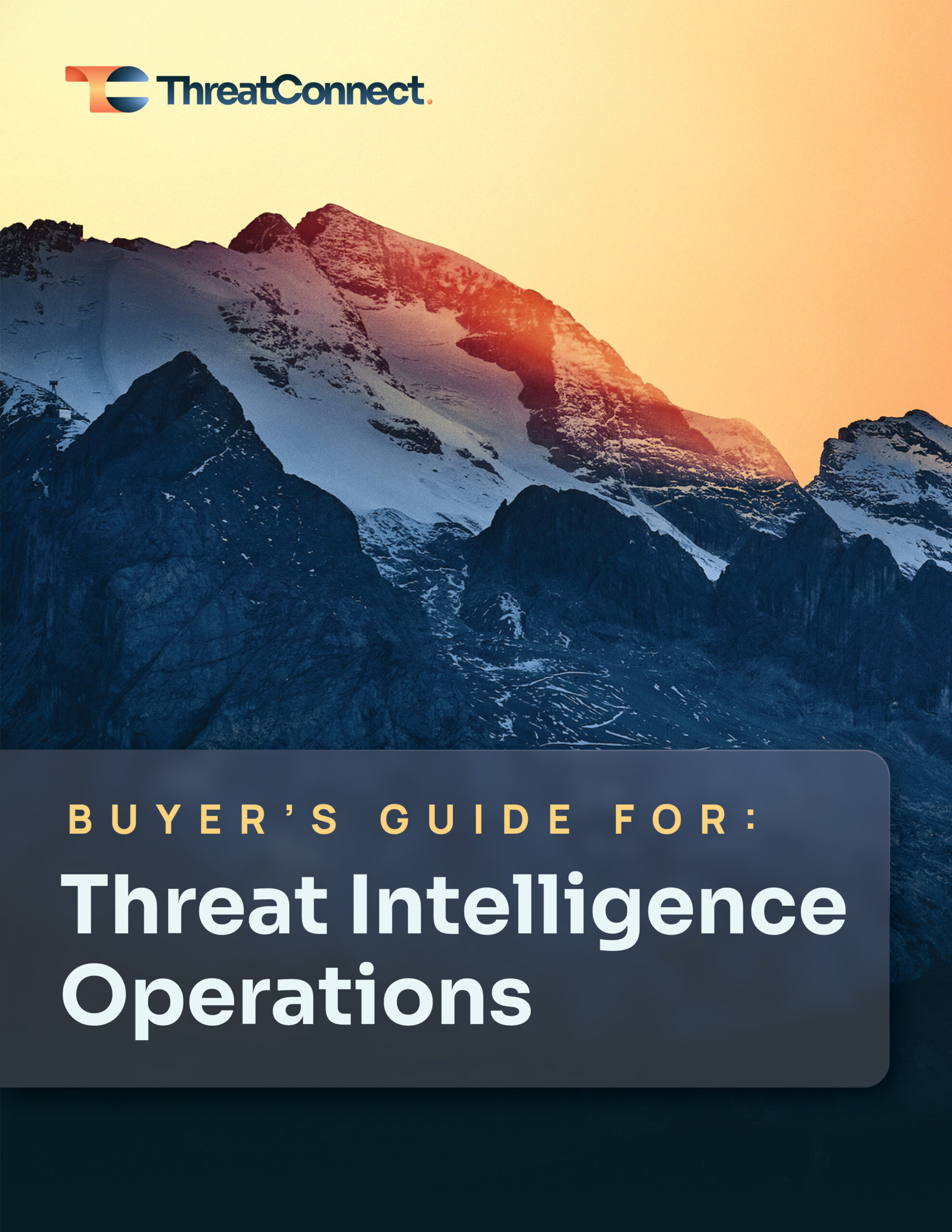The ThreatConnect Buyer’s Guide for Threat Intelligence Operations is a comprehensive resource tailored for cybersecurity leaders, strategists, architects, and analysts seeking to enhance their organization’s security and risk posture by effectively utilizing cyber threat intelligence (CTI).
The Required Ingredients
The Guide delves into various facets of managing and operationalizing CTI, emphasizing the distinction between threat intel data services and threat intelligence technologies and how both are needed to enable a TI Ops function. It also looks at the considerations when launching a TI Ops program, encompassing stakeholder engagement, goal definition, and showcasing the value of TI
Threat Intelligence Technologies and Use Cases
The Guide explains the various forms of threat intelligence and their role and benefits. It also covers the distinctions and differences between threat intelligence technologies, such as a TIP or a TI Ops platform.
This provides valuable guidance to buyers choosing among various technologies and solutions for what best fits their use cases and business priorities.
Buying Criteria
The guide exposes the typical enterprise buying criteria for threat intelligence platforms and highlights how the capabilities offered by different types of providers meet various use cases.
Key points:
- Threat intelligence has broad applicability to organizations, such as implementing a modern SOC, threat hunting, incident response, risk-based vulnerability management, and a zero trust architecture.
- Leveraging threat intel can lead to management and operationalization challenges caused by big data problems – volumes, variety, velocity, and veracity.
- Effective and efficient use of TI must consider people, processes and use cases, and technology.
- A successful TI program must include engaging stakeholders, defining goals, objectives and requirements, obtaining executive buy-in and support, and ultimately showing value for investments.
- The appropriate approach to managing and operationalizing intelligence depends on organizational maturity and desired security outcomes.
- There are intrinsic differences between TI providers, platforms for managing TI, and TI Ops platforms. The selection of the appropriate technologies depends on maturity and use case, and can dramatically impact the program’s success.
Download the Guide now to plan your threat intelligence journey!
